I climb out of the car and immediately gaze at my surroundings. Mountains surround me, covered in a thick blanket of pine trees. Colorful wildflowers decorate the streets. Clouds hover low, basking everything in a warm, gray light.
I never want to go home.
My family vacationed in Canmore, Alberta, Canada from June 24 to 28, 2025. During our stay, we visited Banff National Park (specifically Lake Louise and Moraine Lake), the town of Banff, and the Columbia Icefield.
Banff National Park is Canada’s most visited national park, attracting more than 4 million visitors each year. The park is managed by Parks Canada, the government agency that manages the country’s 37 national parks, which has announced $450 million in budget cuts, especially to the Enhanced Nature Legacy fund. The cuts have raised concerns about Canada’s climate goal to conserve 30 percent of its land and water by 2030.
Parks Canada does not seem to be worried, according to its website, which says, “Targeted reductions are expected to have minimal impacts on Canadians.” In fact, when my family visited, our whole party received $30 vouchers for the park. The budget cuts may have an impact on Canada’s 30 x 30 goal, but so far, it hasn’t affected visitors’ experiences.
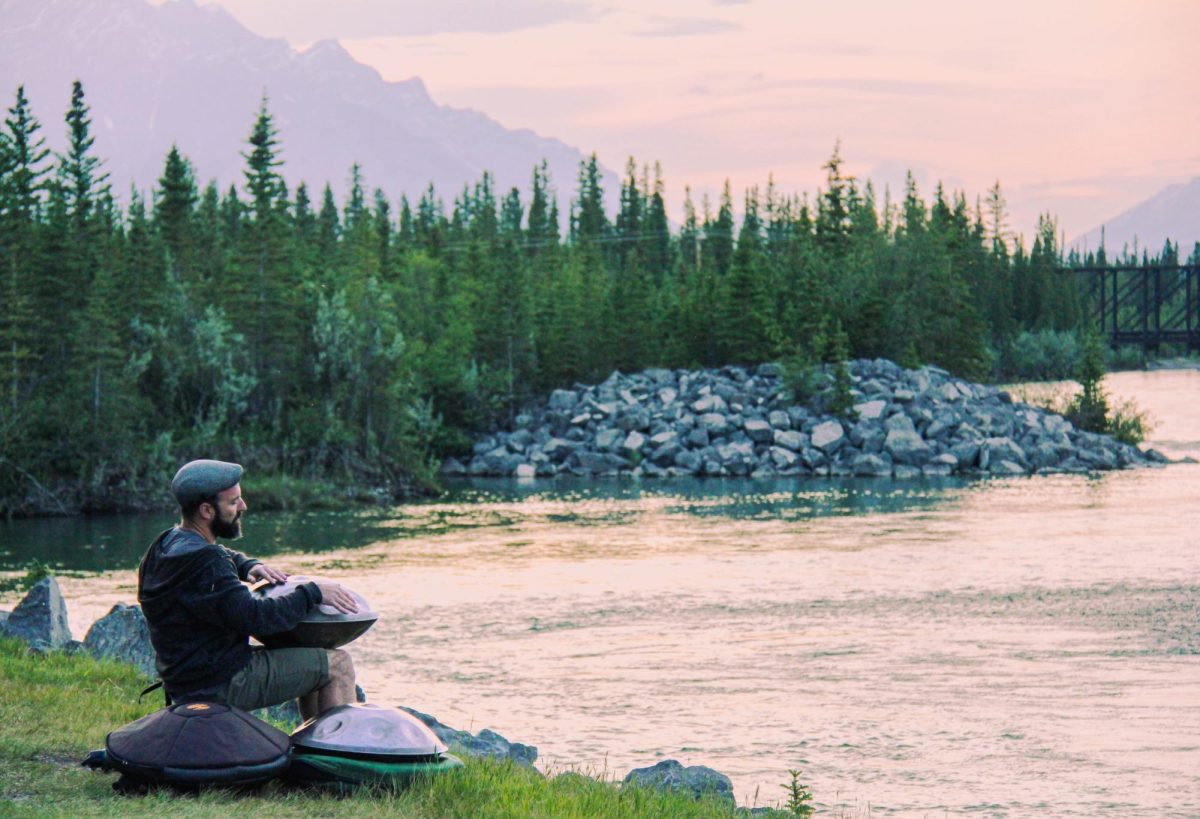
Sitting along the Bow River trail in Canmore, Alberta, Canada, Nicolas, a handpan teacher, (@nickohandpan) plays the hand pan on the D Aegean scale. He has been playing for six years and often performs next to the Bow River or other trails in Canmore.
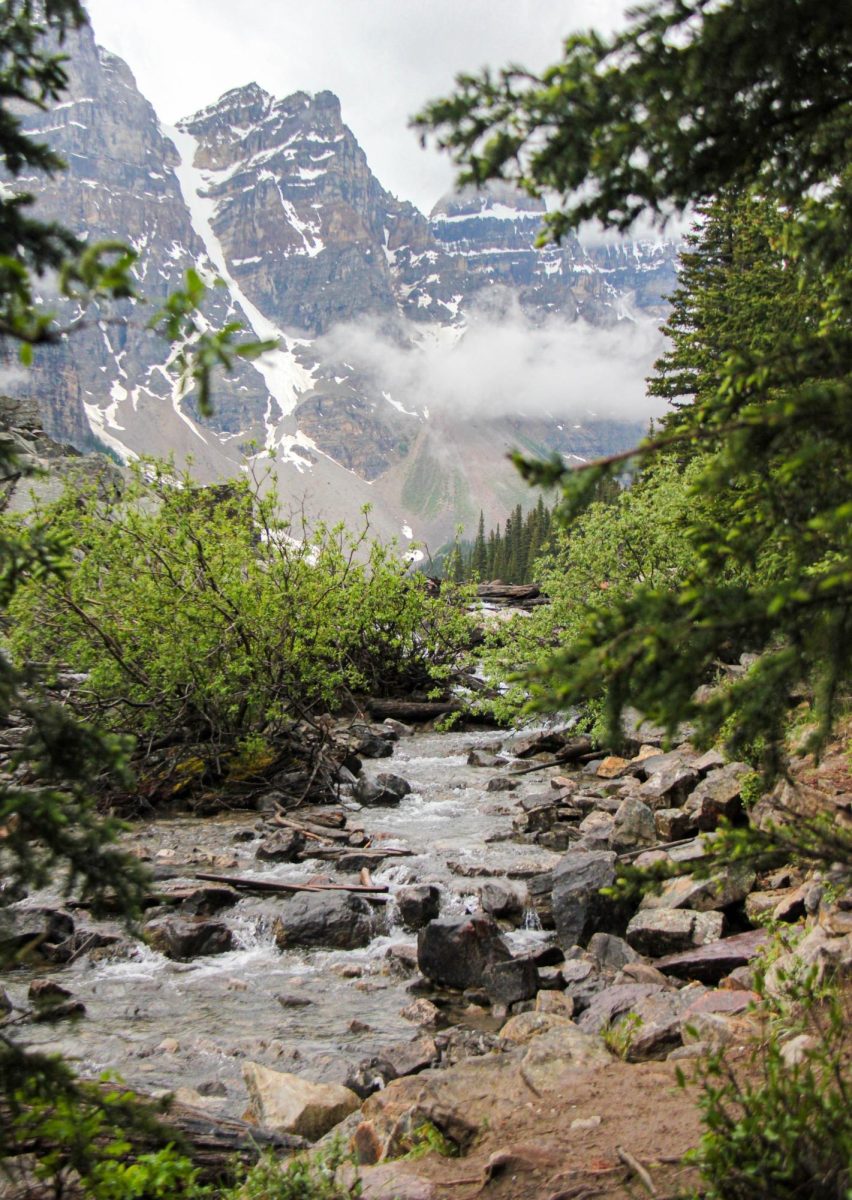
The Moraine Creek branches off from Moraine Lake and runs alongside the Moraine Lake Rockpile Trail. The trail is one of the most popular activities during the summer season at Moraine Lake due to the many scenic viewpoints and easy access.
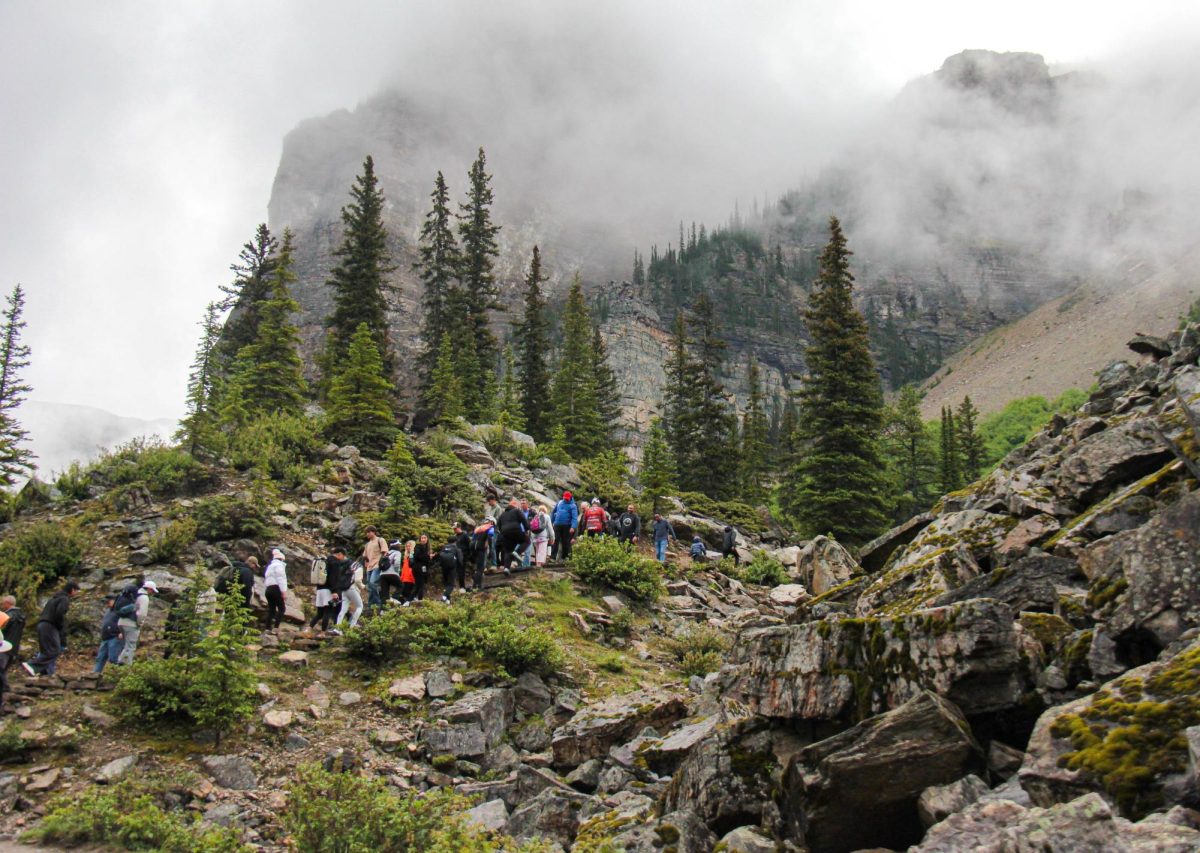
Hikers make their way up the steps of the rockpile that mark the start of the Moraine Lake Rockpile Trail. The 20-minute trail offers visitors a striking vantage point over the glacier-fed lake.
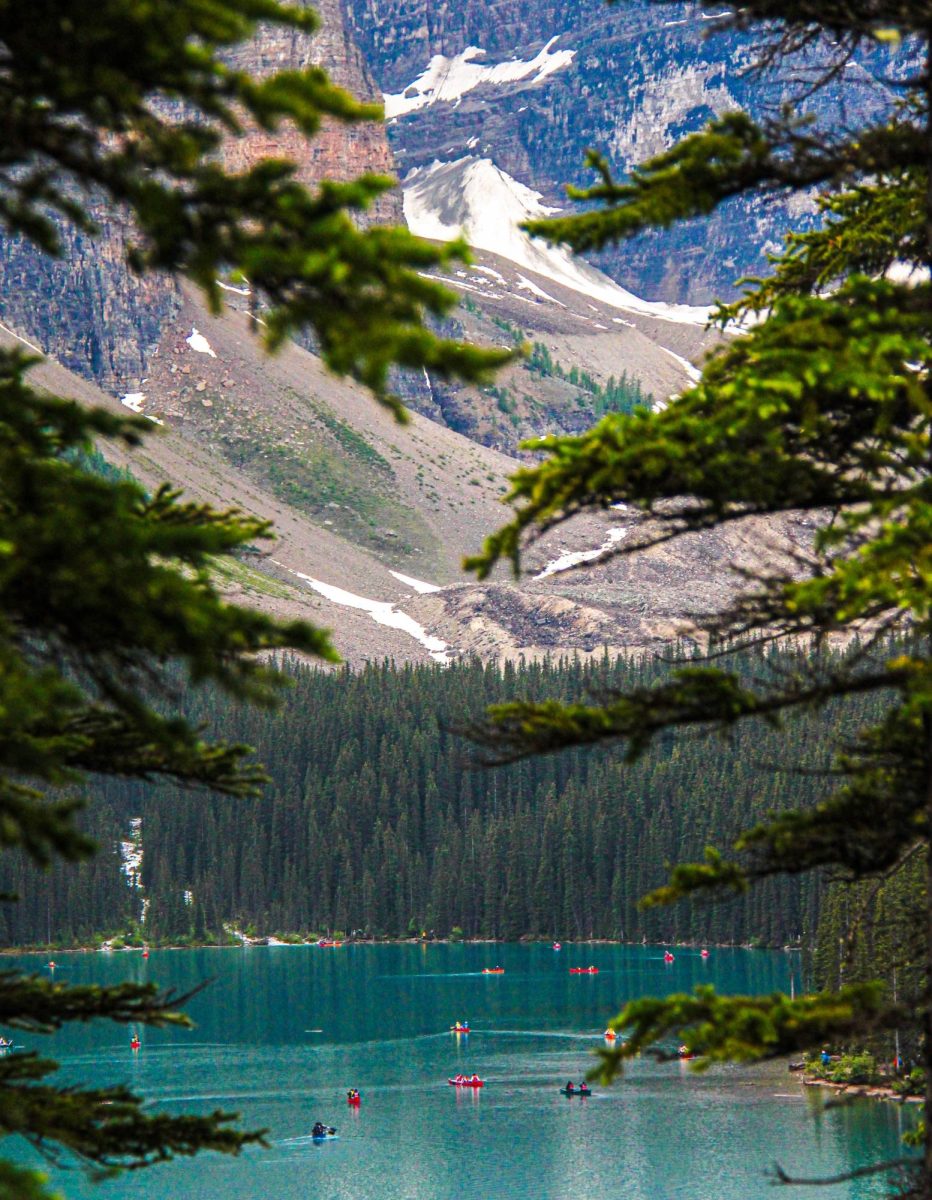
Canoes dot Moraine Lake, set against the backdrop of the Rocky Mountains. Boating is one of the most popular activities at the lake in the summer, due to the lake’s bright turquoise waters. The vivid color comes from the light refracting off the tiny glacial rock particles in the water.
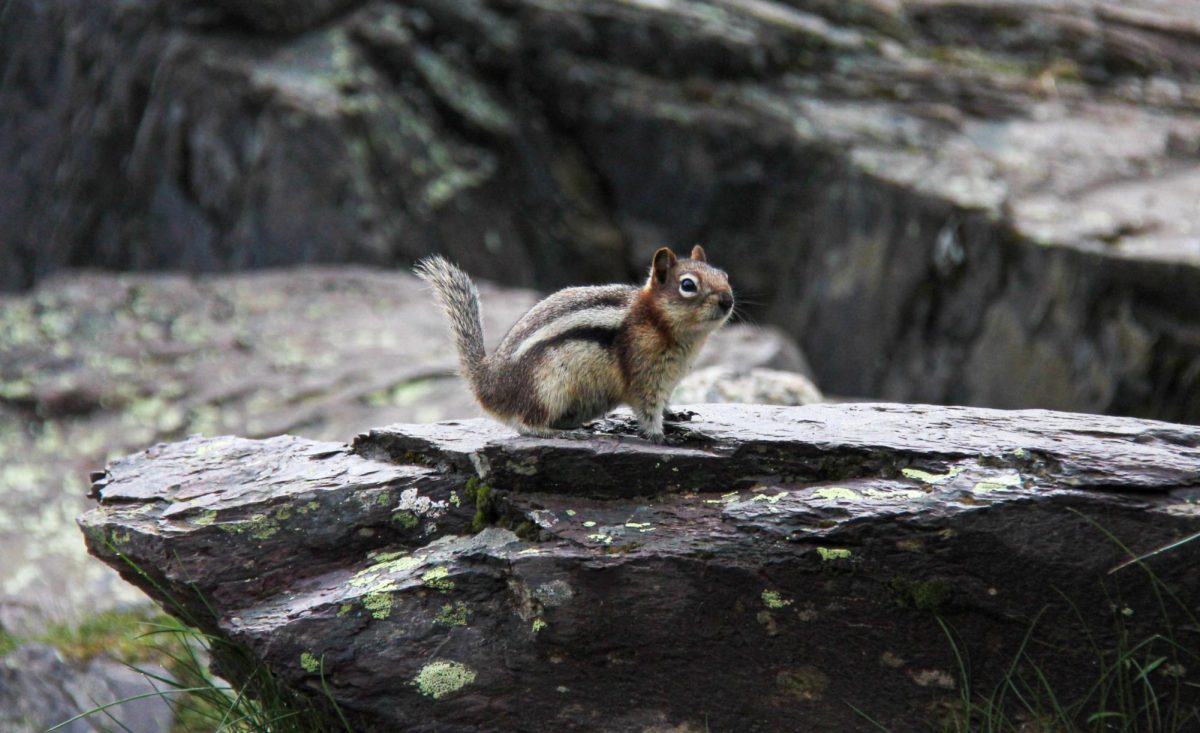
A Least Chipmunk rests on a rock along the Moraine Lake Rockpile Trail. Banff National Park is home to only two kinds of chipmunk, the Least Chipmunk (Tamias minimus) and the Yellow-pine Chipmunk (Tamias amoenus), because of the high elevations found in Banff.
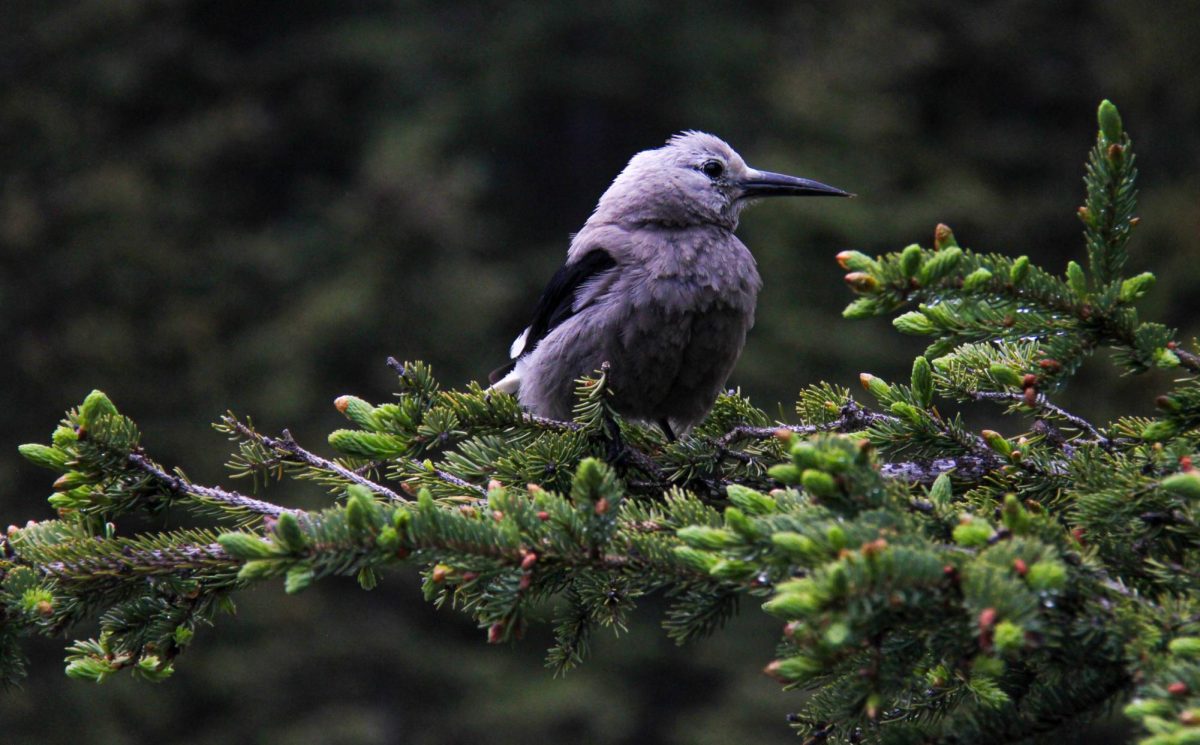
Perching on a pine tree, a Clark’s Nutcracker looks toward Lake Louise. The bird lives in the Rocky Mountains and is seen more during the summer season.
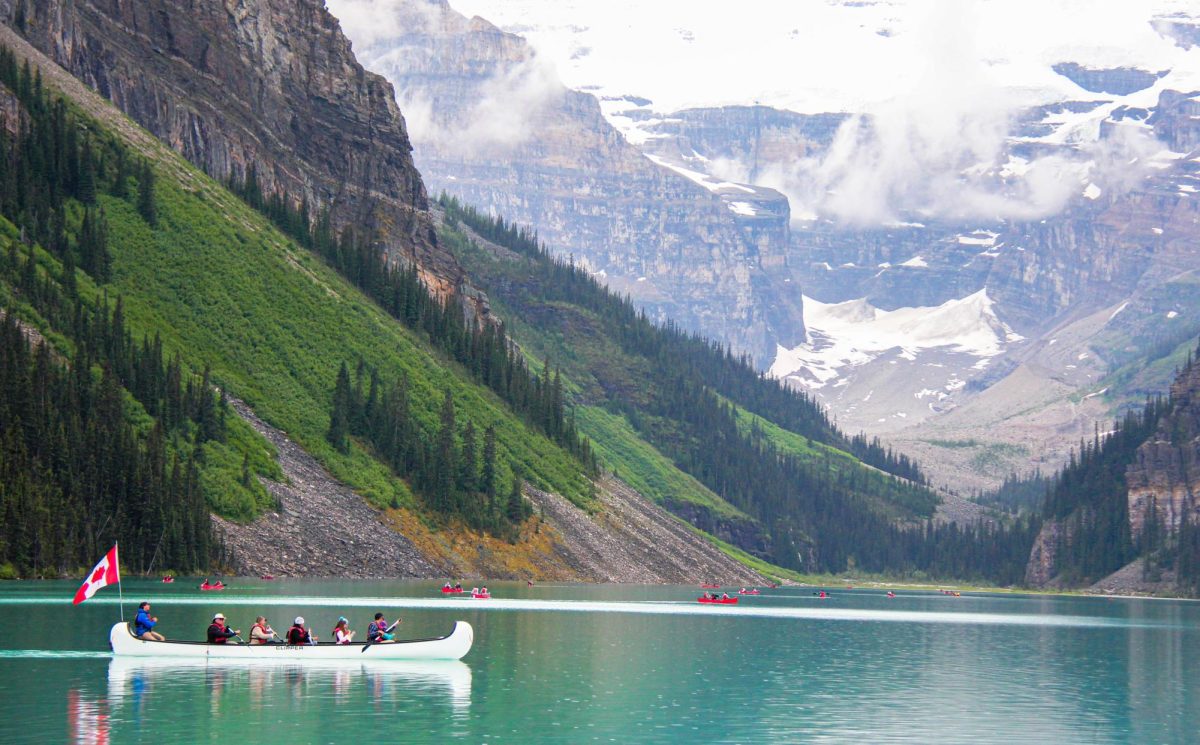
A group of visitors canoe their way across Lake Louise in summer, displaying the Canadian flag behind them. Around 50 percent of park visitors are international travelers, primarily from the United States and Europe.
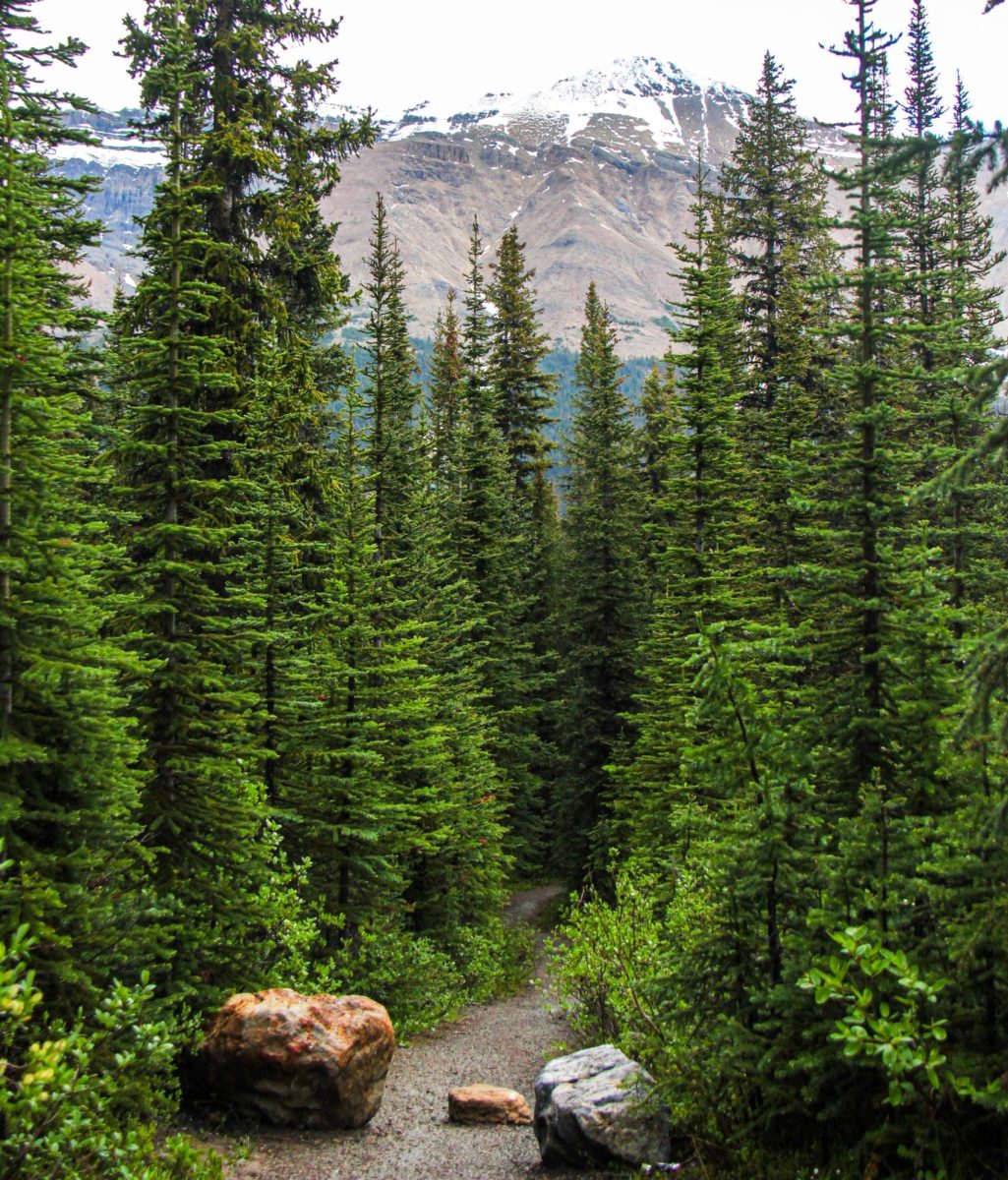
A trail winds through a sub-Alpine forest toward a vista that overlooks Peyto Lake, a viewpoint popular for its panoramic sights and easy access. Located off of Icefields Parkway, the lake is famous for its stunning blue waters and wolf’s-head shape from above.
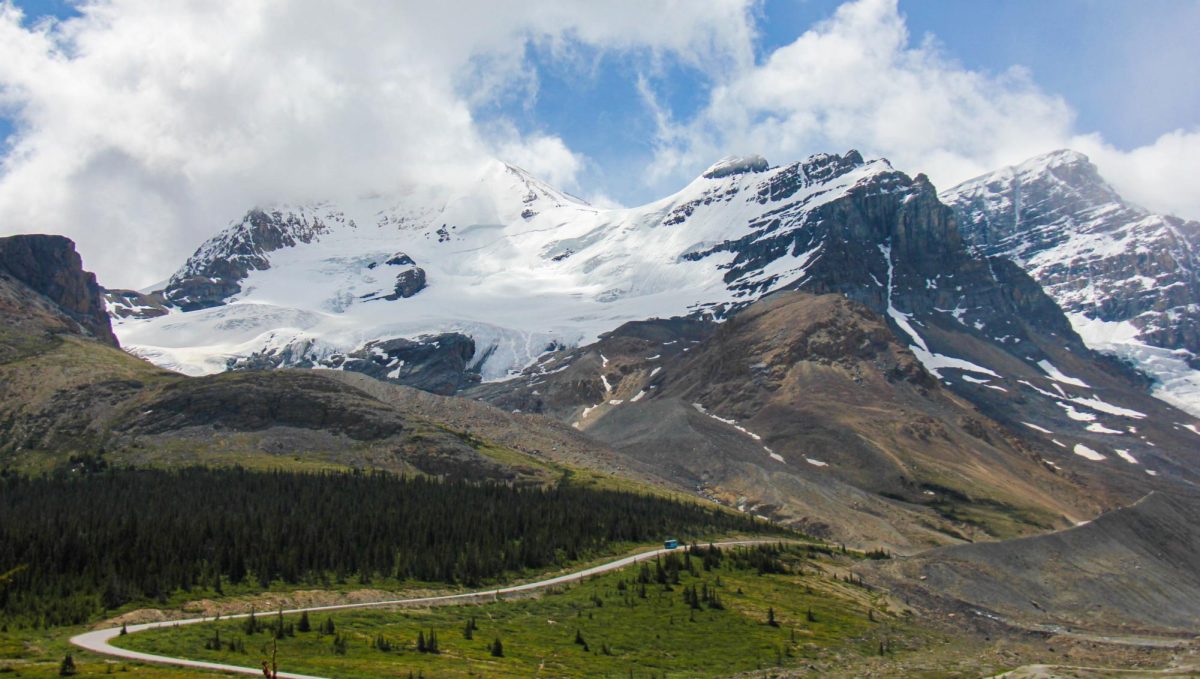
Set against the backdrop of the Columbia Icefield, a blue tour bus drives toward the Athabasca Glacier. Halfway through the journey, the passengers were transferred from the bus to a snow coach to drive on the glacier.
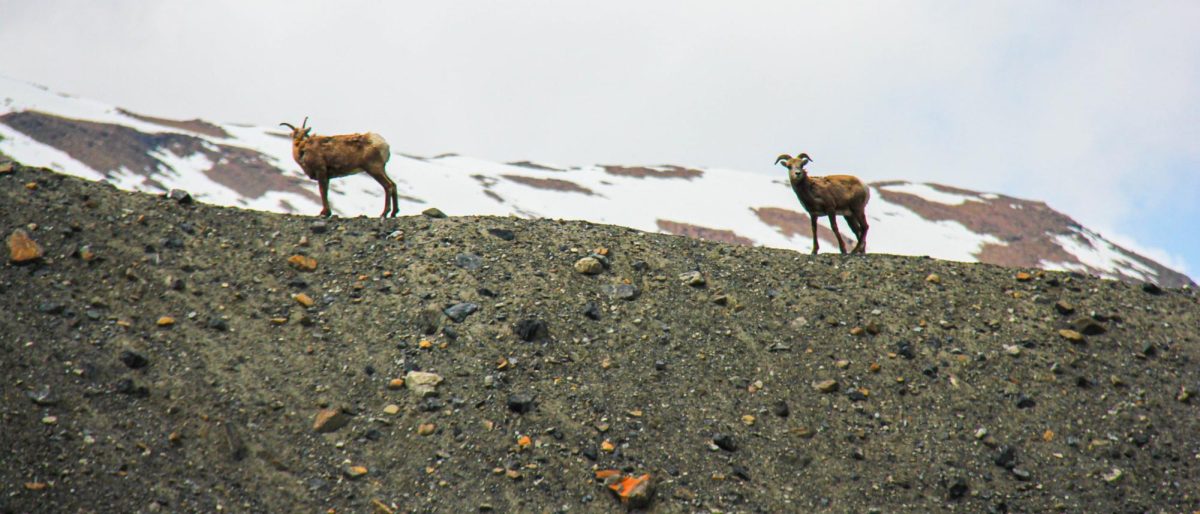
The second most common hoofed animal in Banff are bighorn sheep because of the lack of major predators and the mountainous terrain. Here some are standing on a hill by the Columbia Icefield. Both sheep were ewes (females), characterized by their short, spiky brown horns.
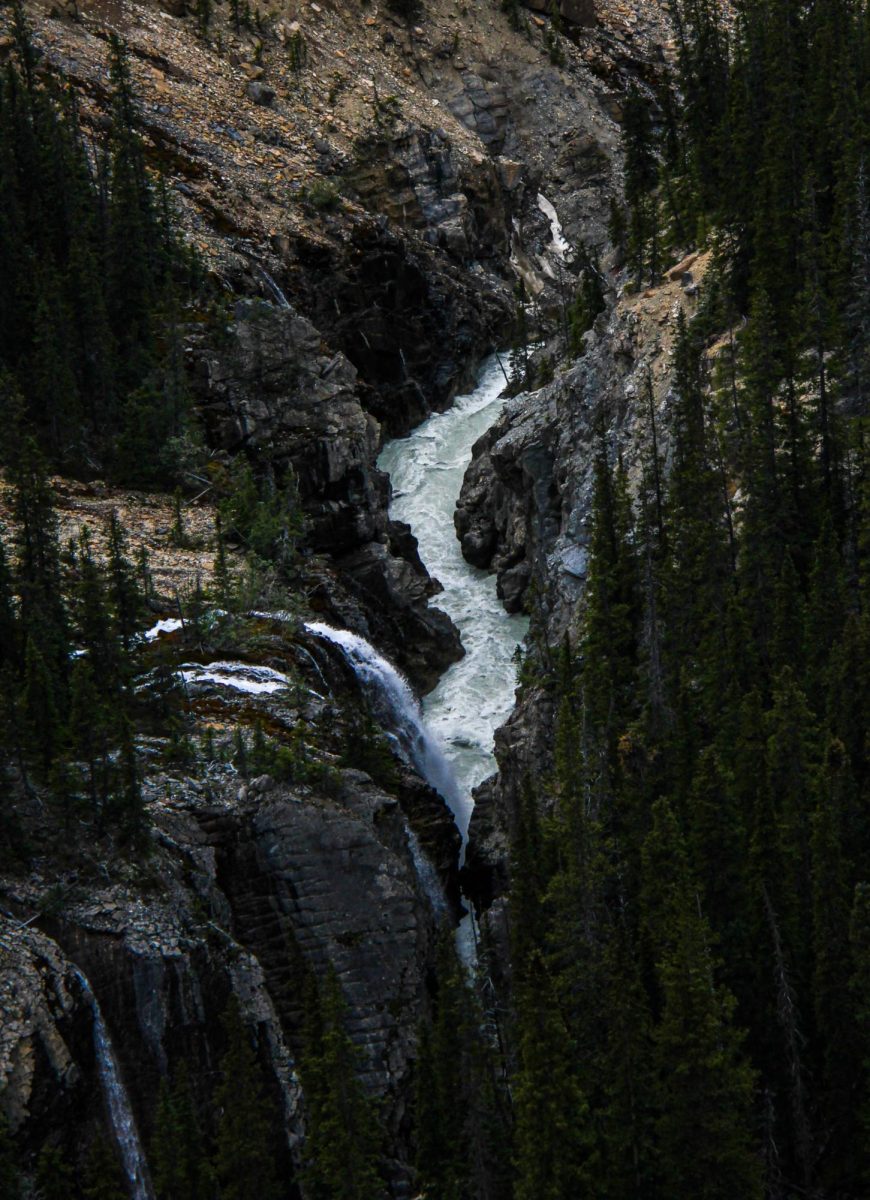
Seen from the Columbia Icefield Skywalk, the Sunwapta River winds through Sunwapta Valley. Located in Jasper National Park, the river originates from the Columbia Icefield and is famous for creating the Upper and Lower Sunwapta Falls, which is a popular stop on the Icefields Parkway.
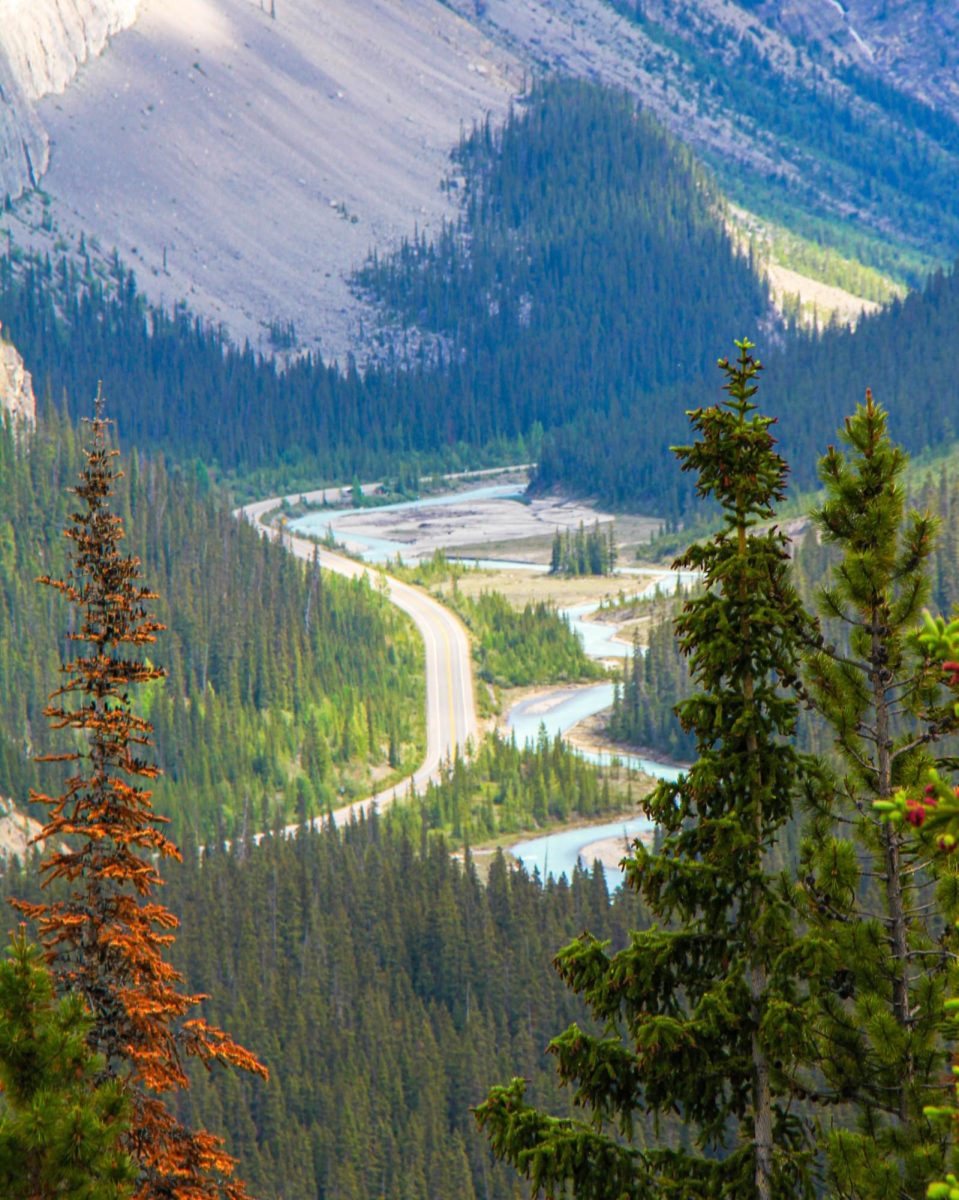
Maintenance of roads like the Icefield Parkway relies on national funding provided to Parks Canada, which could be at risk due to the Canadian government’s plan to reduce spending by $14.1 billion until 2028, and $4.1 billion annually after that. The cuts may affect jobs, infrastructure maintenance, heritage site management, and visitor services.
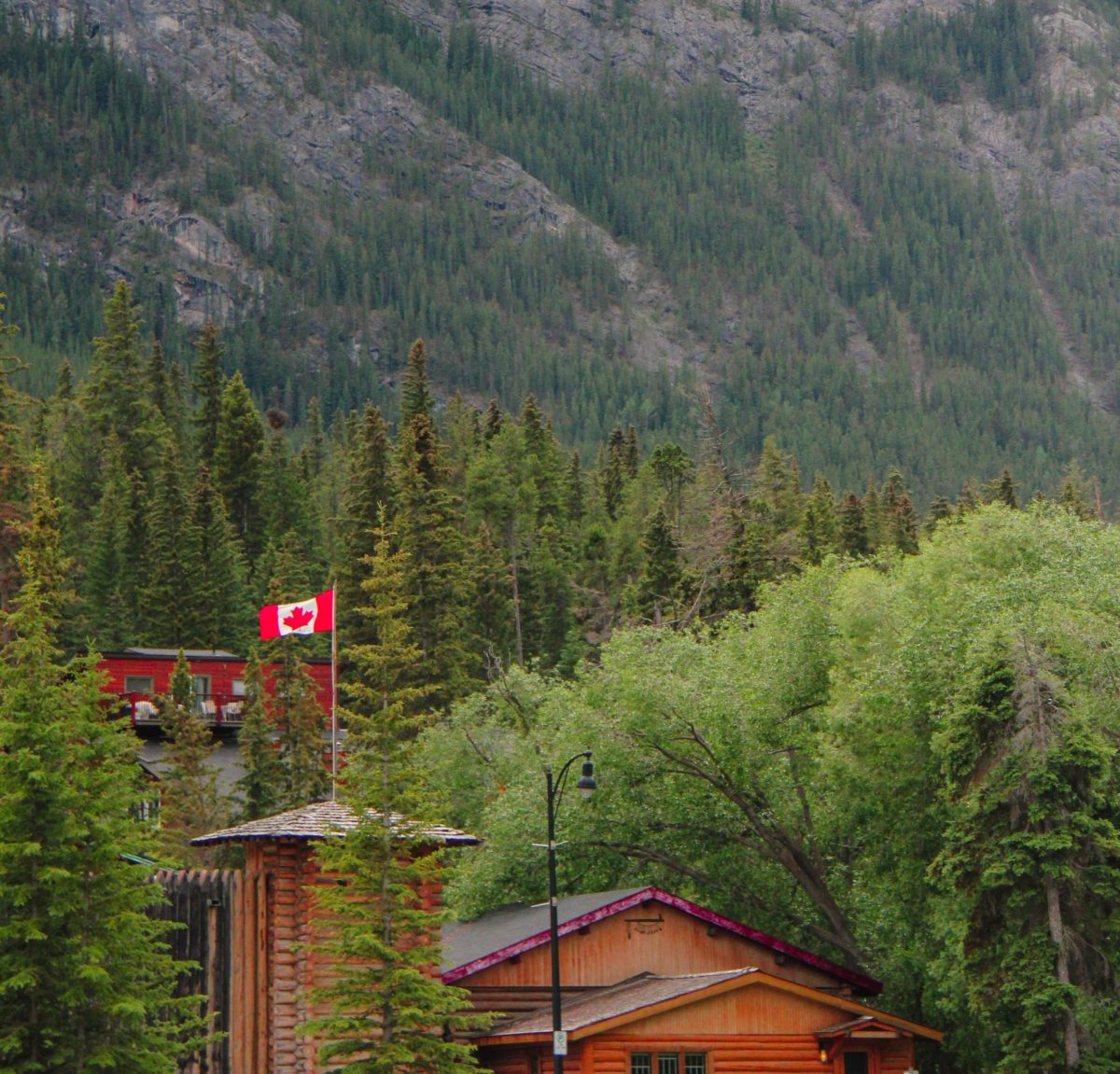
In the town of Banff, the Canadian flag waves in the wind, surrounded by pine trees. Banff is a resort town filled with restaurants, boutiques, and hotels.
–July 18, 2025–





